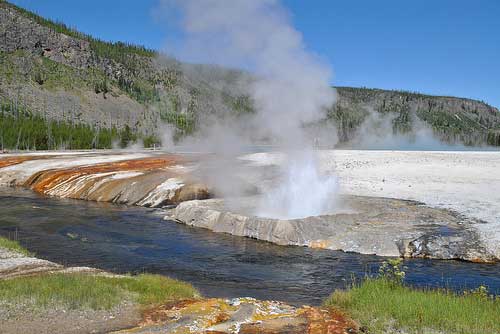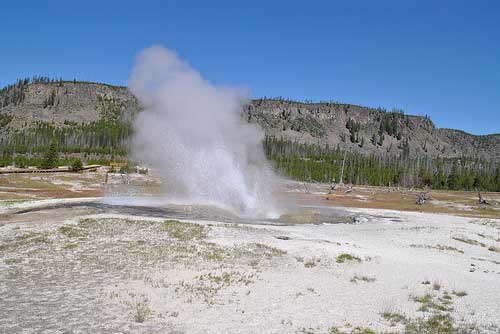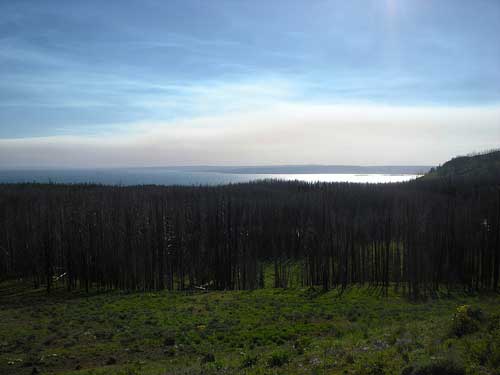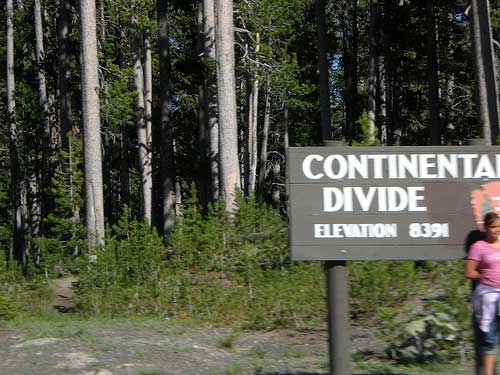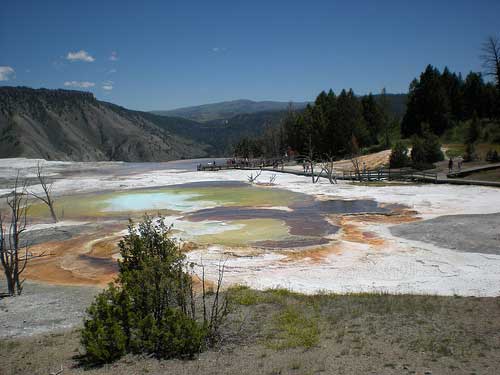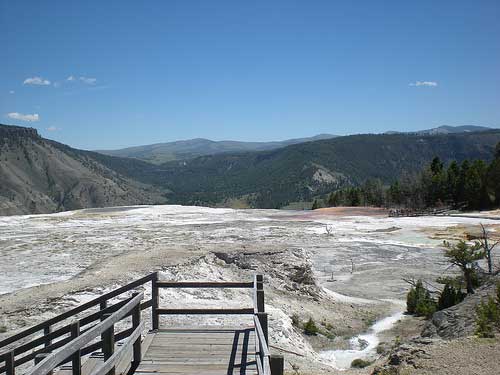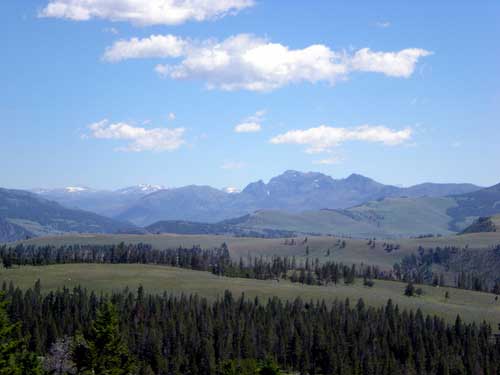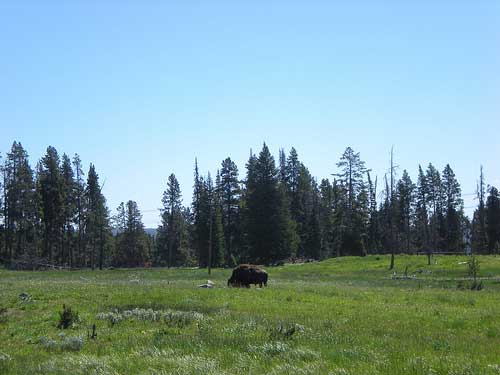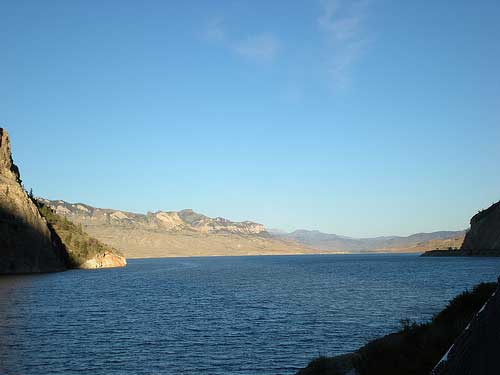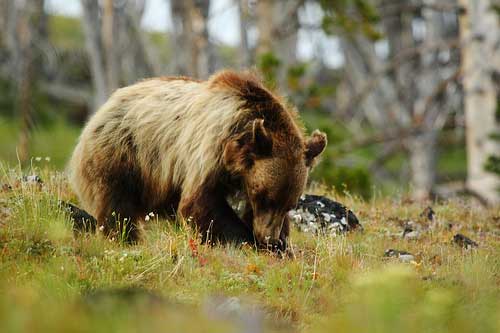Yellowstone NP, Wyoming
Key information: Yellowstone NP, Wyoming 
- Huge, fabulous thermal areas, thick forests, waterfalls, canyons and steep peaks can all be seen in the wild and sometimes dangerous backcountry of the famous Yellowstone NP.
- A splendid variety of flowering plants flourish here, along with fascinating wildlife, including bighorn sheep, bison, elk, bears and even wolves.
- There are a large number of walks and hikes, varying in distance and difficulty, all over the park. Some of the best are:
- Yellowstone draws more than two million visitors each year. Popular areas can be crowded, and in high summer the main sites are swarming with tourists. Its backcountry wilderness is surprisingly unvisited, however, and once you leave the visitor centers, boardwalks and bigger trails behind, people can be few and far between.
- Several of these are tough walks, in remote areas, on which you will have to be self-sufficient and where weather, lack of water and bears can all cause real problems. Come prepared.
- Bechler (River Trail and Canyon)
Walkopedia rating
- Walkopedia rating84
- Beauty34
- Natural interest16
- Human interest0
- Charisma34
- Negative points0
- Total rating84
- Note: Negs: crowding in some areas; unpredictable weather; heavy loads on longer hikes; bears.
Vital Statistics
- Length: Variable
- Maximum Altitude: 3,462m
- Level of Difficulty: Variable
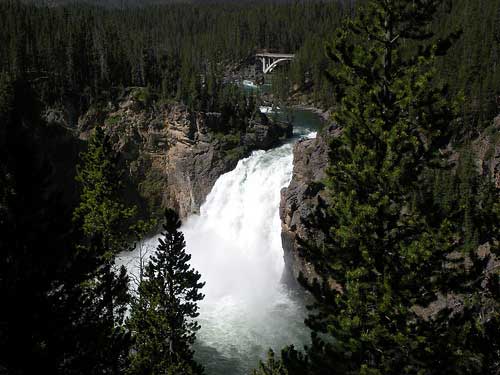
WALK SUMMARY
Yellowstone is a stunning wilderness, full of natural beauty and geological wonders. The mountains, forests, waterfalls and canyons are on a grand scale, the isolation once you leave the main tourist areas is headily reminiscent of old tales of Americas first explorers; you can almost see the fur trappers, and easily imagine their encounters with bears, wolves and, of course, native Americans.
It is believed that the first humans here were aboriginal Americans around 11,000 years ago; when the famous Lewis and Clark expedition entered the region in 1805, there were at least three tribes in the area and evidence of them trading with some much further away.
Once explorers began to penetrate the wilderness, the stories they brought back of waterfalls streaming vertically from the ground, tress petrified into shape and boiling mud were dismissed as exaggerated tales and myth; it wasnt until the second half of the nineteenth century that the area was properly explored, its landscape recorded and named, and the idea of protecting this astounding environment put forward. In 1872 the National Park was declared, the USs first.
Somehow the wildlife of the park fits in with its massive scale, with bighorn sheep, bison, elk, wolves and bears all living within its confines. Naturally, this brings with it problems, chief of which is the danger of bears ensure that before you leave, you have taken in all relevant information concerning how to avoid them, and what you should do if you meet one.
Despite the joy of spectacular scenery and beautiful views, and the pleasure of trekking through remote backcountry, walking in Yellowstone should not be taken lightly. Unpredictable weather, including lightning storms, bears and the dangers of the thermal areas should all be taken into account come prepared.
The park pullulates with walking wonders: the best are probably the following.
- The Thorofare Trail: Although the topography is not strenuous, this walk extends deep into the wilderness of Yellowstone, and so is rarely ventured on foot. However, those willing to take on the challenge are amply rewarded.
- Black Canyon: With steep, narrow canyons, the rushing Hellroaring Creek, fascinating rock formations and a suspension bridge, this trail offers Yellowstone finery in a short day walk.
- Mount Washburn: This trail is claimed to offer more in scenery, wildflowers and wildlife than any other Yellowstone day hike. The summit of Mount Washburn provides panoramic views, and it is sometimes possible to catch an eruption of Old Faithful.
- Bechler (River Trail and Canyon): Although usage has grown, its easy to see why, and this trail remains well worth hiking. Waterfalls, hot springs and geysers proliferate.
- Uncle Toms Trail: This is a popular, relatively short and easily accessible trail down into the grandiose Yellowstone Grand Canyon, with views of its breathtaking waterfalls.
- The Geyser Area Trails: As well as the longer Bechler Trail, there are many day walks which go through the Upper Geyser Basin an area of around two square miles in which nearly a quarter of all the geysers in the world are concentrated.
In addition, the Continental Divide Trail runs through Yellowstone, cutting though the south-western corner. If they have time then those walking the Divide can venture further into Yellowstone; several of the trails mentioned above are around this area, including the Thorofare Trail and Bechler River Trail and Canyon.
Other accounts: share your experiences
Your comments on this walk, your experiences and suggestions, and your photos are very welcome. Where appropriate, you will be credited for your contribution.
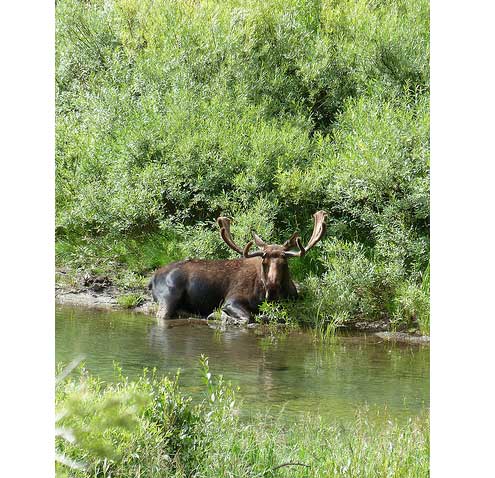
We have a lot of helpful practical information and tips about this walk, covering everything from the best books and maps, to timing and weather, geting there, possible problems, whether you need a guide and where to find them, and useful websites. This section is only open to members.
Membership is FREE AND JOINING TAKES 30 SECONDS. To login or sign up click here
Safety and problems: All walks have inherent risks and potential problems, and many of the walks featured on this website involve significant risks, dangers and problems. Problems of any sort can arise on any walk. This website does not purport to identify any (or all) actual or potential risks, dangers and problems that may relate to any particular walk.
Any person who is considering undertaking this walk should do careful research and make their own assessment of the risks, dangers and possible problems involved. They should also go to “Important information” for further important information.
Anyone planning an expedition to this place should see further important information about this walk.
Safety and problems: All walks have inherent risks and potential problems, and many of the walks featured on this website involve significant risks, dangers and problems. Problems of any sort can arise on any walk. This website does not purport to identify any (or all) actual or potential risks, dangers and problems that may relate to any particular walk.
Any person who is considering undertaking this walk should do careful research and make their own assessment of the risks, dangers and possible problems involved. They should also go to “Important information” for further important information.
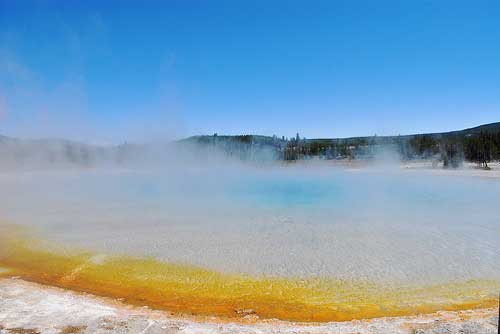
OTHER ACCOUNTS
share your experiences
Add your experiences, suggestions and photos. We would be delighted to receive your writing and ideas (which will be attributed appropriately where published).
Anyone planning an expedition to this place should see further important information about this walk.
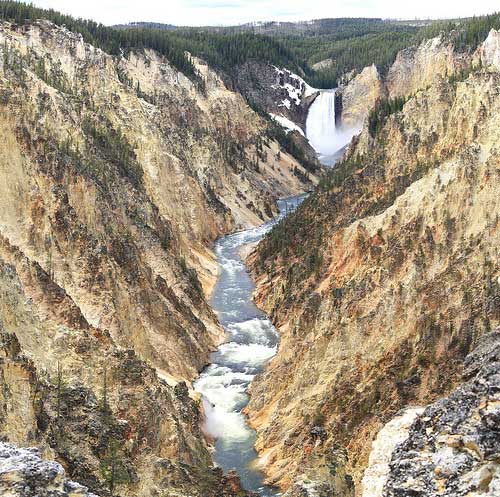
Responsible travel matters, a lot. How you travel will make a real difference - for better or worse. PLEASE consider this when making plans. Read more
 |
All material on this website is © Walkopedia Ltd 2008 - 2026, unless specified otherwise.
ALL RIGHTS RESERVED


